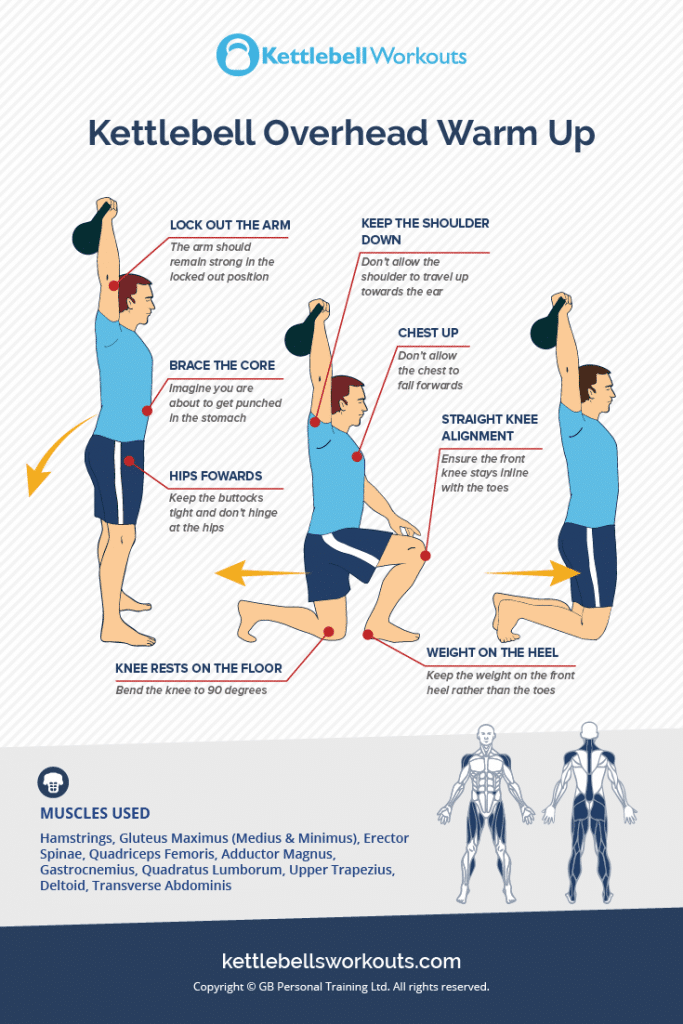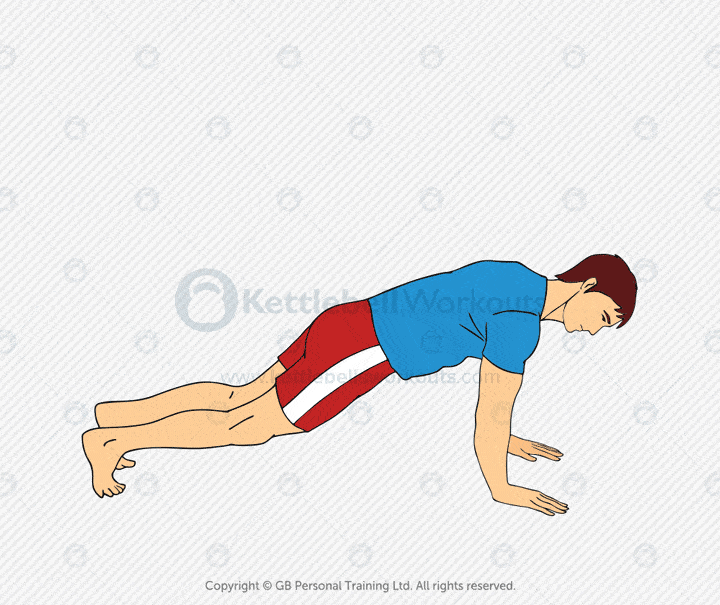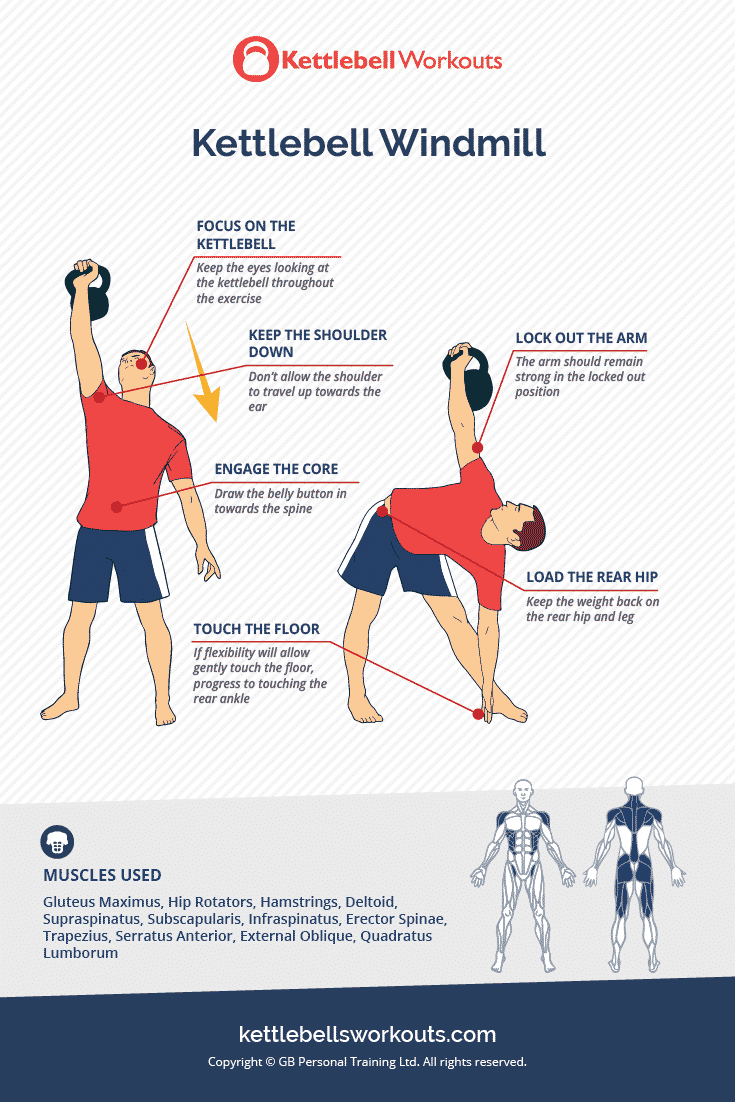Last Updated on 29 July 2025 by Greg Brookes

The kettlebell overhead warm-up is one of my go-to drills to prepare for any overhead work.
It’s deceptively simple: hold a kettlebell overhead and move through a series of kneeling positions, while keeping the bell locked out.
This movement activates the shoulder stabilisers, engages the core, and gives you a clear read on whether your body is ready to press.
What Is the Kettlebell Overhead Warm-Up?
You start standing with a kettlebell locked out overhead.
From there, you:
- Drop into a half kneeling position
- Move into a tall kneeling position
- Return to half kneeling
- Stand back up, all without lowering the bell
It’s a flow that forces the body to stabilise from the shoulder all the way down to the hips.

Why It Matters
This isn’t just a shoulder warm-up. It’s a postural and core activation drill that reveals readiness for more complex overhead work.
It improves:
- Overhead shoulder stability
- Midline bracing and anti-extension control
- Movement awareness and control under load
- Balance between left and right sides
Muscles Worked
- Rotator cuff and deep shoulder stabilisers
- Deltoids
- Obliques and abdominals
- Glutes
- Spinal stabilisers
How to Do the Kettlebell Overhead Warm-Up (Step-by-Step)
- Clean and press the kettlebell overhead with one arm.
- Hold the bell locked out above your head, arm straight.
- Step back into a half kneeling position (same-side knee down).
- Lower to both knees (tall kneeling).
- Return to half kneeling.
- Stand back up.
- Switch arms and repeat.
Tip: Keep your ribs down and your bicep close to your ear. Don’t let the kettlebell drift forward.
Watch the kettlebell overhead warm-up in action:
Common Mistakes to Avoid
- Arching the back to hold the bell up
- Letting the shoulder drift forward or shrug up
- Losing balance when transitioning between positions
- Rushing through the movement
Warm-Up Drills to Pair With It
- Arm Bars (5 per side)
- Kettlebell Overhead Holds (30 seconds)
- Half Kneeling Windmill (3 per side)
- Shoulder Taps (10 reps)
Programming Tips and Reps
- Start with 1 rep per side
- Build up to 2–3 reps per arm
- Aim for 60 seconds continuous movement per arm as a goal
- Use at the start of overhead press days or shoulder-focused sessions
When to Use This Exercise
- Pre-workout warm-up before pressing or snatching
- Mobility prep for overhead athletes
- Rehab or control work for shoulder health
Coach’s Insight: Greg’s Take
Every client I work with who presses a kettlebell overhead starts with this drill.
It’s a brilliant test. If you can’t stabilise a light bell during these transitions, your shoulder isn’t ready for heavy pressing.
Plus, it highlights core imbalances like nothing else.
Start light and stay strict, this is about control, not brute strength.
Kettlebell Overhead Warm-Up vs Overhead Hold
While the overhead hold trains static control, this warm-up adds movement, forcing the body to react and adjust in real time.
It’s more functional, more engaging, and far more diagnostic.
Who Should Do This Exercise?
- Anyone preparing to press overhead
- Clients recovering from shoulder tweaks
- Athletes needing better scapular control
- Lifters developing overhead mobility
Related Exercises You Can Try Next
- Kettlebell Overhead Hold
- Turkish Get-Up
- Half Kneeling Press

Want More Smart Kettlebell Training?
Get strong overhead without pain or compensation.
Explore my complete library of kettlebell pressing tutorials and warm-up strategies to move better and lift stronger.
Prepare your shoulders and core for every lift. Explore all kettlebell exercises to enhance mobility and stability.
Frequently Asked Questions
Light to moderate, start with a weight that allows complete control and no compensation.
Yes. When performed for time, it builds shoulder endurance, mobility and core strength.
Keep your head neutral and look forward, avoid craning the neck.
That’s normal early on. It means your stabilisers are working. Stick with it and your control will improve.





Comments